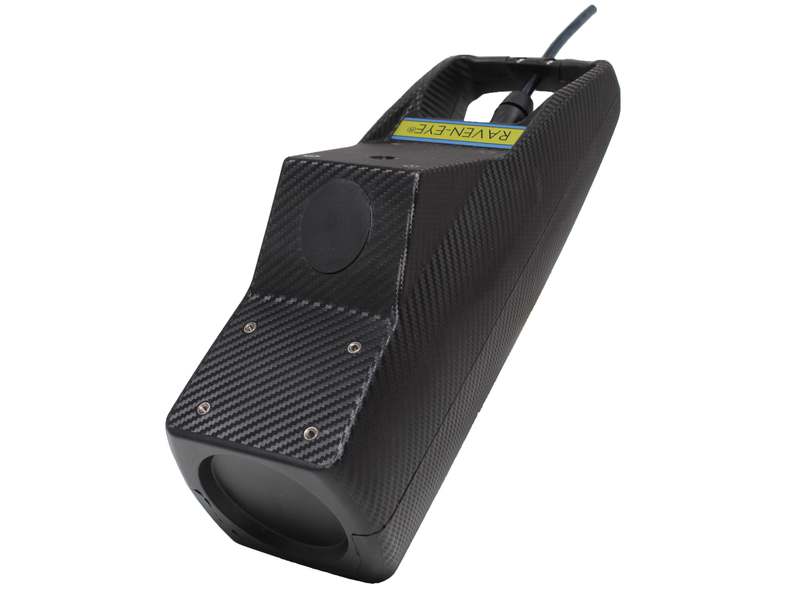Flow-tronic





The RAVEN-EYE® is the new non-contact RADAR area/velocity flowmeter for open channel flow measurements from Flow-Tronic. It combines state of the art non-contact measuring technology which measures flow from above the water surface with easy integration into existing SCADA or telemetry systems.
The combination of these benefits and virtually zero maintenance requirements, give the user a very low “Cost of Ownership”.
The name was not chosen at random, like the bird, the RAVEN-EYE® has three key attributes: Intelligence, Adaptability, Survivability.


Affordability
Intelligence
Radar area/velocity flow sensors have been in use for many years, so why is the RAVEN-EYE® so revolutionary? Using the latest design, development and production methods, has allowed Flow-Tronic to manufacture a high quality new generation radar sensor at a price that will make it your first choice for open channel and sewer flow measurement, but affordability is only one of the RAVEN-EYE®’s benefits.
Firstly, Intelligence: The sensor uses radar to measure surface velocity, average velocity is calculated within the sensor by analyzing surface velocity distribution using a self-learning technology that doesn’t require theoretical modules nor site calibration. Negative effects from non-ideal flow conditions, waves, turbulence etc. are removed. The Raven-Eye is not a piece of “laboratory” equipment; it’s a fully developed system, designed for use in real world applications.


Adaptability
Survivability
Next, Adaptability: The Raven-Eye can be used in almost any open channel location, from 10 cm upwards, with velocities from 0,15 m/s to 9 m/s. It’s ideal for retrofitting and industry standard MODBUS and analogue outputs allow easy integration with existing SCADA, PLC and telemetry networks. The Raven-Eye can also operate as a standalone system with flow and diagnostic displays, data logging and web data transfer.
Finally, Survivability: The Raven-Eye builds on years of experience measuring sewer flows, the sensor is totally sealed, no joints, seals, screws or washers are used. It’s rated to IP68 which means it withstands surcharge events and aggressive atmospheres. Internal sensors monitor and report the condition or “health” of the system.
How does it work?
The RAVEN-EYE® is mounted above the water surface and measures the flow velocity using the radar technology and the flow depth using a level sensor (ultrasonic, radar or pressure). The flow rate is calculated applying the continuity equation: Q = V x A.
The RAVEN-EYE® will function even when obscured by plastic and wood. During each measurement cycle, it makes thousands of velocity measurements which are processed into an extremely accurate average velocity measurement reading using a dedicated digital signal processor making real-time spectral analysis.
Main benefits
- Accurate flow measurement
- Cost-effective
- Portable or stationary version available
- Non-contact: the sensor is positioned above the water surface
- Easy installation
- Robust IP68 (PU) enclosure
- Totally sealed sensor: no joints, seals or screws
- Developed for field applications
- Velocity distribution analysis & self-learning technology for average velocity calculation
- For channels from 100 mm and upwards
- Easy integration with SCADA, PLC or telemetry systems
- Direct RS485 interface available (no monitor or converter necessary)
- One 4-20 mA configurable output
- Perfect solution for difficult flow conditions: high solids content, high temperature, shallow and caustic flows, high velocities and large open channels
- No maintenance
- Auto-diagnostic system


Sewer/Channel Networks Monitoring
Wastewater Treatment Plants
- Large sewer channels
- Capacity studies
- Combined sewer overflow (CSO) studies
- Inflow & infiltrations studies
- High velocity flows
- Discharge
- Flow to treatment
- Discharge
- Plant effluent
- Storm discharge
- Process flow control


Industry & Hydropower
Rivers, Channels & Irrigation
- Plant effluent
- Process waste water
- Flows with high solid contents
- Cooling Water
- Industrial compliance monitoring
- Caustic & corrosive flows
- Storm water monitoring & compliance
- Climate Rivers, Channels & Irrigation& hydraulic engineering
- Storm water basins calculations
- Permanent measurements of surface water
Contextualization
Image Information







Technical Specifications
All you need to know about RAVEN-EYE®
General
| Size (HxWxL) | (HxWxL) 183 x 140 x 422mm Vertical blocking when mounted: 300 mm |
| Weight | 3,65 KG (Without cable, level sensor and mounting accessories) |
| Materials | Polyurethane (PU), stainless steel Cable: Polyurethane jacketed |
| Cable Lengths | 10, 20, 30 or length as needed up to 300 m |
| Protection | IP68 |
| Certifications | CE |
| Temp. Range | -30 to 70 °C Storage: -30 to 80 °C |
| Pwr Required | 4 to 26 VDC |
| Outputs | 1 passive analog 4-20 mA (velocity only) |
| Communicat° | RS-485 (serial MODBUS ASCII open protocol) for use with PLCs RS-485 (proprietary protocol) for use with Unitrans or RTQ-Logger series Field interchangeable: Automatic recognition between stationary or portable units |
| Flow Accuracy | ±5% of reading (typical) |
Flow Measurement
Method
Conversion from surface velocity to average velocity by analyzing surface velocity distribution using a self-learning technology that doesn’t require theoretical modules nor site calibration. Conversion of water level and pipe size to fluid area. Multiplication of fluid area by average velocity to obtain the flow rate.
Velocity Measurement
| Method | Non-Contact Radar Doppler |
| Meas. Range | ±0,08 m/s to ±15 m/s |
| Measurement | Bi-directional |
| Accuracy | ±0.5% of reading ±zero stability |
| Zero Stability | ±0,02 m/s |
| Min. Velocity | 0,08 m/s |
Optional Combined Level Measurement (Ultrasonic)
| Method | Non-Contact Ultrasonic Pulsed Echo |
| Meas. Range | 0,00 to 1,75 m (with RAV-0001) 0,00 to 5,75 m (with RAV-0002) |
| Measurement | ± 0,2% of reading (with RAV-0002) ± 0,3% of reading (with RAV-0001) Includes non-linearity + hysteresis |
| Accuracy | Max. 0,04%/K |
| Zero Stability | 1 mm |
Optional Combined Level Measurement (Ultrasonic)
| Method | Any 4-20 mA loop powered sensor |
